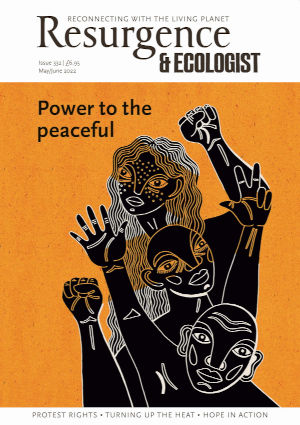Flourish applies ideas borrowed from regenerative agriculture to the design of buildings and urban space. Regenerative agriculture restores a farm ecosystem’s health by providing continuous cover with multiple tiers of crops, and enlisting fungi, arthropods and natural predators to aid the soil. Sarah Ichioka and Michael Pawlyn, built environment professionals with a background in urban consultancy and architecture, apply this thinking to their profession.
The book aims to inspire practitioners and clients through applying systems thinking. The authors are delightfully eclectic in their sources of inspiration, and they draw from ecological economics, biology and even music and film. Their bookishness sometimes creates an academic feel, but, as they acknowledge, the application of such thought to buildings and infrastructure design is still in its infancy and the conceptual case has still to be made.
The authors are critical of the current vogue for sustainable buildings defined by green building codes and weak planning policy. Too often, these are co-opted for marketing purposes without delivering the radical reductions in energy use or ecological restoration needed to remedy planetary crises.
The book has five substantive chapters. Each illustrates a socio-economic paradigm, set out below, identifies solutions from the academic literature, the natural world, or other industries, and then, where possible, locates examples of good practice from the built environment.
The discussion about ‘possibilism’ asks who sets the agenda for designing the built environment. The client, city planner, architect and local activists share authority. One mayor sets out the challenge: “A city is not something that happens … you make choices every day.”
Next is a critical look at mechanistic assessment tools like cost–benefit
analysis or building accreditation, which do not adequately capture the system-wide environmental effects of developments. Instead the authors advocate applying general principles such as sourcing materials locally.
The book goes on to argue that short-termism impedes good long-term decision-making – the financial calculus discounts the long-term benefits of conserving materials and energy. Instead of stewarding resources like our metal ores, sand and aggregates, we down-cycle resources. We should treat buildings as ‘material banks’ with closed-loop cycles of repair and reuse.
The authors then explore the idea of symbiosis. This chapter identifies several collectively conceived buildings in traditional Philippine societies, and small experimental ones in the west like Los Angeles Eco-Village. But these are few, as symbiosis is antithetical to the property market.
The book ends with case studies on how buildings contribute to human development beyond monetary return. These include localising food growth within cities, such as Singapore’s ambition to increase food resilience, replacing fossil-fuel-based energy systems with energy efficiency and building-integrated renewables, and reducing the use of toxic materials.
Flourish sketches a new agenda for built environment professionals to make their profession part of the solution, not the problem. But, as the authors recognise, the system that needs to change is far wider than building professionals alone, and the book’s radical and attractive vision invites a wider audience to the conversation.







